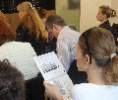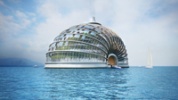 |
RSABC
Russian Sustainable Architecture and Building Council
Established on the initiative of Russian Union of Architects, a member of the International Union of Architects (UIA) |
Classification
Nowadays sustainable development determine economics of developed countries and will definitely remain the general trend within the nearest decades. Sustainable building in Europe has three classes of rates: ecological, economical and social wich are united by two more categories of grades - quality of technical performance and the quality of processes of engineering, construction and the use of buildings.The rating of quality of architectural environment is based on the building life cycle and construction materials ratings. Sustainable building and architecture are regulated by different systems of certification of "green" buildings, national building norms and standarts, legislation of the country.
US, GB, Germany – Clients by majority will choose the national certification system (market, teams, tenants are used to understand the existing national certification system). There is no need to select a system from different options.
Russia – Clients have to select a system from different options so far (because no national system implemented yet). International systems are competing in terms of being selected (1) as they are, and (2) as basis for elaboration of the national system of Russia.
To date, the main barrier to green building certification under LEED, BREEAM or DGNB certification systems in Russia is that they are developed for specific conditions of another country or region than Russia. Project teams that pursue certification under such adopted standards have to go the extra mile to understand and adjust to compliance criteria that underlie these standards to be able to demonstrate equivalence to the local standards.
Do the US, GB, German system differ much?
Yes. Comparable ratings under LEED, BREEAM, and DGNB hint the differences between these standards. Main differences are the focus of the systems, and the strategy to achieve these ratings.
LEED focus – energy efficiency.
BREEAM focus – renewable energy, recycling and location.
DGNB focus – life cycle performance, project quality.
Which system is the most useful basis for elaboration of the national system of Russia?
For first, LEED seems to be the most practical approach, and most comparable to Russian needs (e.g. energy efficiency). But LEED will not adapt to local conditions for having comparable results all over the world.
For second, BREEAM seems to be the most developed system worldwide, with already adopted version for regions like the Middle East. But BREEAM, which was initially developed in UK, is based on British construction norms and management rules that partially, but significant differ from the widespread European approach outside the UK.
So, eventually the DGNB system seems to be the most applicable basis for Russia’s national green building elaboration:
DGNB system, which was initially developed in Germany, is based on German (DIN) and European (EN) norms. Historically (back from the 19th century), Germany’s DIN norms has constantly influenced Russia’s construction norm system. Today, a significant part of German and Russian construction norms is congenial.
Currently, Russia is adapting most of the European EN norms. For this, taking the DGNB system as basis, will ensure the compatibility of the Russian certification system with Russian norms. DGNB system offers a very balanced approach to achieve certain positions in "green" cerification systems rating. Poor performance in one section of the rating system may be compensated by better rating in other sections.
Taking into consideration that Russian construction reality is in some parts far from green building certification requirements, balancing and compensation might be the best approach to Russia’s needs.
| All rights reserved. Copyright RSABC. © | Site development "O-Mega Studio". |



